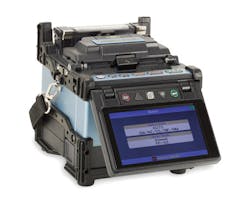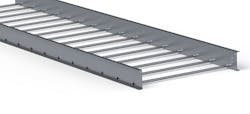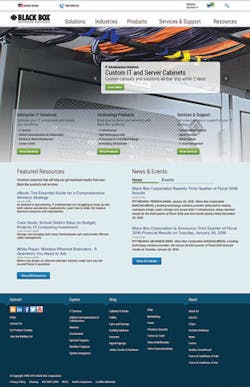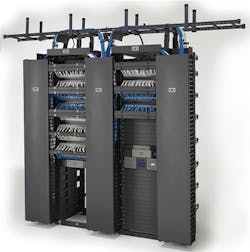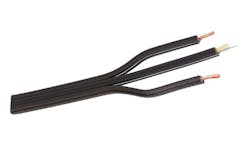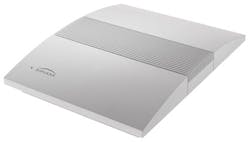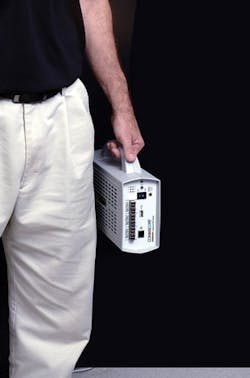Editor's Picks
Tessco, Indatel form partnership for fiber-optic purchasing
Tessco Technologies, a provider of the product and value chain solutions required to build, use, and maintain wireless systems, has been selected by Indatel, an association of wholesale carriers, as a key delivery partner for fiber-optic cable and fiber accessories.
Indatel is essentially a network of networks, offering transport connectivity via fiber-optic routes to rural areas throughout the U.S. The new partnership provides volume pricing to Indatel members as they build and maintain fiber-optic networks nationwide.
“Tessco is proud to have been selected by Indatel to serve its members’ fiber-optic needs,” said Tessco vice president, business development, Ted Winslow.
Tessco says it will be activating the new relationship through outreach programs with participating networks, including on-site meetings, live webinars, and marketing outreach.
AFL unveils Fujikura 62S active core alignment fusion splicer
AFL has expanded its Fujikura fusion splicer product line with the Fujikura 62S, an active core alignment splicer built for exceptional splice loss performance and minimized splice time. With a conventional flip-open wind protector and non-motorized tube heater, the complexity of this splicer is reduced, without compromising total cycle time, says the company. Additionally, the number of steps to process splices is minimized with an auto-start feature for both the splicing and tube heating process.
The Fujikura 62S ensures a high level of productivity for technicians with its 23-second shrink time, using standard splice sleeves. Durability is enhanced via the unit’s ruggedized styling, with its mirror-less optical system and impact-resistant monitor. The unit’s transit case doubles as a built-in or mobile workstation and makes splicing easier.
Additional features of the Fujikura 62S include a 5,000 splice electrode life; a Li-ion battery rated for 200 splices/shrinks per charge; 5 mm cleave length for splice-on connectors or small package needs; sheath clamp or fiber holder operation; and Internet software upgrades.
Universal ladder cable tray system suits heavy industrial, commercial structures
Cable management solutions provider Cope announced that it now offers its Cope Ladder Cable Tray System, a universal cable tray solution intended for use in the power, automotive, transportation, data, heavy industrial and commercial industries. According to the company, the Cope Ladder cable tray can withstand heavy rigor and harsh environments via a range of heavy, hot dip galvanized steel, fiberglass, and aluminum options.
Cable tray systems are a cost-effective alternative for buildings requiring multiple cable runs, notes the company. The new product’s open design allows for easy installation of cables by electricians, as well as future access for adding or removing cable runs. All models are UL-classified and meet National Electrical Manufacturers Association (NEMA) VE-1 standards for metal cable tray systems.
Offered in both aluminum and steel, the Cope Ladder Cable Tray Systems are available for all cable tray load classes that might be required-from NEMA 12A to 20C. Cope also offers a 30C I-Beam system that will support 100 lbs. per foot at a 30-foot span. An offering of four different load depths, four different materials and finishes, and seven widths provides a cost-effective solution for most job requirements.
A range of nearly 20 fittings makes the system customizable to accommodate any kind of tricky configuration, adds Cope. Users can achieve design flexibility with numerous sizes of horizontal and vertical elbows, adjustable elbows, cross pieces, tees, reducers, and branches. Cope customer service experts can help select the right fittings for specific applications.
The Cope Ladder Cable Tray Systems are also especially known for their “swaged rung.” The tray’s design offers double the pull-out strength, provides an overall stiffer rigidity, and unobscured access to cables when compared to welded options. Due to the swaged mechanical connection made at 20,000 lbs., the rung will not fail even under extreme conditions.
Depending on the gauge required, steel versions of the product meet ASTM A1011 or ASTM A1008 standards. The lightweight, aluminum option is extruded 6063-T6 material and meets NEMA loading requirements.
Black Box re-launches U.S. website
Black Box Corporation recently launched a new U.S. website, which the company says “has been designed to provide a market-focused user experience with improved navigation and functionality throughout, allowing customers to access detailed product and services capabilities information and improved content on a streamlined platform.”
Created with the user experience firmly in mind, enhancements to the company’s new U.S. website, according to Black Box, include: “significantly richer content that helps customers consider the right solutions and services for their specific projects and applications; new vertical market and industry content to seamlessly align customers with solutions to business opportunities; and streamlined design featuring enhanced mobile capabilities.”
Further, the site’s revised brand product pages allow users to easily access white papers, customer testimonials, and detailed technical information. “The new website redesign further aligns Black Box’s digital footprint with the strategic focus of the business around delivering complete solutions to customers,” said a spokesperson for the company.
Eaton says new HDNR system increases cable capacity for more data center efficiency
Eaton recently introduced a flexible and space-efficient rack and cable management solution for high-density network equipment and data center applications. The company’s new B-Line series High Density Network Rack System (HDNR) utilizes its patented 4-Dimension structural support system to enable an increase in cable management capacity compared to competing vertical cable managers, the company says.
The HDNR system product line offers a full complement of open-frame rack, cable management, power, and airflow accessories. To help reduce costs and preserve valuable data center floor space, the platform’s unique cable management design supports its maximum cable capacity without any increase in physical footprint. The HDNR system also achieves maximum density with an increase in total cable capacity, versus leading competitor high density rack systems, contends the company.
According to Eaton, preserving uptime during maintenance or system changes, the HDNR system is designed with low-profile in-rack electrical power distribution unit (ePDU) mounting that allows users to remove equipment from the back of the rack without disconnecting power. The system also features fully adjustable rails, designed to meet diverse and changing equipment, cabling and power needs both before and after installation. Multiple ePDU mounting options offer versatility when system requirements are unknown, and a fully adjustable rack waterfall is compatible with Eaton’s complete range of cable management and rack accessories.
Further, to provide reliable protection for hardware investments, the HDNR system is engineered with a 2,200-pound load rating and is both Underwriters Laboratories (UL) and California Hospital Office of Statewide Health Planning and Development (OSHPD) pre-approved. To provide additional safety, all HDNR configurations feature a self-bonding grounding system and floor anchor holes.
“Eaton is revolutionizing the traditional rack system to provide customers with a new standard for functionality and flexibility,” comments Tara Walker, product manager, Rack and Runway products, Eaton. “The new HDNR is specifically designed to meet the evolving needs of today’s data center and network environments while creating a more cost effective infrastructure.”
Cannon Companies named authorized BICSI training facility
Nationwide utilities contractor Cannon Companies in Milton, WA announced that it has been made an authorized BICSI training facility for the certification for cabling design and installation services. Cannon provides design and engineering, project management, implementation, testing, and certification for outside plant and inside plant wireless, electrical, and telecommunications projects.
In a statement, Cannon said it “strives to provide information, education and knowledge assessment for individuals in the information and communications technology (ICT) community. When it comes to the new BICSI qualifications, [we] have not one, but four to offer. These include basic installer training, copper training, optical fiber training and technician training.”
The company says its BICSI-certified programs’ dimensions include knowledge, compliance, safety and vendor neutrality. “The level of detail in the training far exceeds anything in local or regional codes, and grants individuals access to a steady flow of professional, technical and industry information, allowing them to remain at the forefront of their profession,” added Cannon’s press announcement.
A spokesperson for Cannon Companies commented, “Individuals can always contact us for more information, but we have done as much as we can to make the outline of the courses available clear, concise and transparent. We want to ensure these courses are as accessible as possible.”
CommScope unveils 4 new wireless products at Mobile World Congress
CommScope demonstrated its latest offerings for wireless network operators at the Mobile World Congress 2016 in Barcelona, Spain.
“As wireless networks evolve toward Cloud RAN, one rule still applies-operators need to squeeze as much capacity out of their existing networks as possible,” noted Ben Cardwell, senior vice president, mobility solutions, CommScope. “CommScope is developing solutions that build upon our long-standing expertise in radio frequency (RF) and cellular solutions and include our newly-enhanced strength in intelligent small cell solutions and fiber connectivity.”
In Barcelona, CommScope highlighted its four latest solutions for “network densification, virtualization and optimization.” The new products are as follows.
The Powered Fiber Cable System is designed to speed and simplify installation, powering and communication for small cells, WiFi access points, security cameras and other DC-powered devices. The hybrid fiber/copper cabling and remote powering unit correct for electrical line loss and reduce the need for local utility negotiations, adds CommScope. Powered fiber enables C-RAN site deployments, carrying power and data from a centralized location for up to three kilometers.
CommScope notes that its OneCell C-RAN Small Cell Solution was shortlisted by GSMA as a finalist for the 2016 Global Mobile Awards in the show’s Best Technology Enabler category. The OneCell system forms a single “super” cell indoors that eliminates handovers and border interference across large areas, creating a high-performing LTE experience for end users. The system also enables sector virtualization with Smart Reuse technology that gives operators the ability to scale capacity within a given spectrum.
With the new Optical PIM Tester, a single technician can connect directly to the base band unit at the bottom of a cell tower and perform an active, cross-band passive intermodulation (PIM) test over the Common Public Radio Interface (CPRI). The Optical PIM Tester makes it much easier to find and remediate PIM even between frequency bands, says CommScope. PIM is a serious source of interference in LTE networks that can result in significantly reduced data throughput and degraded voice quality.
Finally, CommScope cites its PowerShift platform as the industry’s first plug-and-play, direct current (DC) power supply solution for efficiently managing power to remote radio units. The system automatically delivers the most efficient voltage to remote radio units, utilizing technology CommScope developed with the power supply experts at General Electric. A rack-mounted solution, PowerShift can also extend the uptime for RF batteries by up to 35 percent, says the company.
Ideal Networks offers online quote builder for cable test hardware packages
Ideal Networks recently unveiled an online Quote Builder that the company says “enables network cable installers to easily select a cable certifier package that meets their specific job requirements, helping to drive down purchase costs.”
Tim Widdershoven, global marketing manager for Ideal Networks, describes the Quote Builder as “an easy-to-use visual guide that enables cable installers to make an informed buying decision” while building a tailored cable test solution.
Widdershoven continued, “Previously, cable certifiers have only been available in bundles, which may include extra components or functionality that a customer will simply never use. Using our new Quote Builder function online, customers can pick-and-mix from various options to find a certifier that meets their specific requirements and budget in six simple steps.”
Users of the Quote Builder begin by choosing either a 500-MHz Category 6A or 1000-MHz Category 7A certifier, then adding adapters. Permanent link adapters can be used for testing cabling from the outlet to the patch panel, or channel adapters can be used to certify the entire link-including patch cords. Next, users select any fiber modules required, to add Tier 1 fiber-optic cable certification. Following that, accessories are added, such as calibration cables, coaxial adapters, or an industrial Ethernet kit if required. Finally, users select a 1-, 2-, or 3-year CarePlan. Once the user enters some basic contact information, the user receives a quote.
Ideal Networks further pointed out that one piece of cable test equipment users can specify via the Quote Builder is its LanTek III Cable Certifier. Introduced last December, the LanTek III is available in 500-MHz (Category 6A) and 1000-MHz (Category 7A) models. “For fiber cabling, the new FiberTek III modules can be added to the LanTek III-500 or LanTek III-1000 models to provide Tier 1 certification, eliminating the need for additional fiber testers,” Ideal Networks added.
Legrand adds new bridges and corner shields for fiber-optic cable pathways
Maintaining optimal signal integrity is a must in fiber-optic installations, and the new Cablofil corner shields and bridge accessories from Legrand are designed to keep cables protected and secure.
The company says its EZT90RS and RADT90RS components are made of ABS plastic and fit over our current Cablofil corner fittings. The design includes mounting holes for zip ties that are included. Each radius shield is sold in pairs and is available in one size that fits all tray depths; users simply trim to fit.
The Cablofil HXB line creates a bridge over cabling running in opposite directions at tees and crosses in the cable pathway. The line includes the HXB cross bridge for 12-inch-wide tray, a RHXB reducing cross bridge for 12- and 24-inch tray, and a HTB tee bridge for 12-inch-wide tray. The part’s all-metal design includes slotted holes for securing cabling and pre-drilled mounting holes for the BH75KIT bridge horn.
The new bridges mount easily to any CF 54, CF 105 or CF 150 Cablofil tray with included hardware. Finishes include pre-galvanized, hot-dipped galvanized, black, and custom color powder coating to match any installation.
Leviton acquires cable manufacturer Brand-Rex
Leviton acquired Brand-Rex Ltd, “a leading developer of cabling solutions for network infrastructure and high-performance industrial applications,” Leviton said in a statement in late 2015 announcing the deal. “Brand-Rex’s proprietary cabling solutions and robust European market presence are a natural complement to Leviton Network Solutions’ existing network infrastructure systems offerings and strength in the Americas.”
The company added that Brand-Rex will provide cable to complement Leviton’s connectivity solutions in Europe, the Middle East, Mexico, Latin America and Asia. “Over time, Leviton will use this new expanded geographic presence and logistics infrastructure to offer a wide range of Leviton products in these markets,” Leviton said. “Leviton will continue its existing cable-supplier partnerships to meet the unique needs and specifications of customers in the United States.”
Ross Goldman, executive vice president and general manager at Leviton Network Solutions, will have overall responsibility for the business. He commented, “The merging of the two solutions will be welcomed by the growing number of customers that seek quality, standardized and global network infrastructure. It will allow customers to access a broader set of services and solutions with local support worldwide.”
Brand-Rex will be part of the company’s Leviton Network Solutions division and will continue to be managed by Martin Hanchard, who will report to Goldman. Leviton and Brand-Rex will maintain their separate sales and distribution channels, as well as existing manufacturing operations. Brand-Rex products will continue to use the Brand-Rex name following the acquisition.
Daryoush Larizadeh, Leviton's president and CEO, said, “The natural synergies between Leviton and Brand-Rex will allow for a pure growth opportunity as we strengthen and expand our geographic and vertical industry presence.”
Leviton’s chief executive officer Don Hendler said he “could not be more thrilled about the opportunities this acquisition will provide, and we welcome Brand-Rex to the Leviton family of companies.”
Hanchard, Brand-Rex’s chief executive officer, commented, “Our long-term goal for Brand-Rex has always been to join a large, multinational industry group that shares our core values. We are delighted to join the Leviton family, and look forward to our customers realizing the benefits of this acquisition.”
Cisco, Philips team to offer connected, PoE-powered LED lighting
Cisco and lighting giant Philips recently announced a strategic alliance, through which the companies will co-market and co-sell Cisco’s Power over Ethernet-enabled switches and Philips’ PoE-powered LED lighting. When announcing the alliance, the companies said, “Lighting is everywhere, making it one of the easiest ways to bring the Internet of Things to office buildings. Light points in the Philips system, equipped with sensors and software applications, can be connected using Cisco technologies. This lighting network creates a pathway for information and helps enable new services.”
“Our alliance has two of the world’s biggest and trusted lighting and connectivity brands working together to bring the Internet of Things to life in offices and commercial buildings across the world,” said Philips Lighting senior vice president and head of strategy and marketing Bill Bien. “Customers will receive the best energy-efficient lighting experience in the connected world and be able to use information acquired from their connected lighting system to save energy, reduce costs, improve productivity and optimize their workplace environment.”
“To make offices more comfortable, office workers can personalize and adjust LED lighting to their preferences and tasks,” the companies explained. “For mobile access, office workers can use a smartphone app to access other building services through a communications network.
“Lighting is a logical first step to bringing IoT to enterprises worldwide,” they added. “Equipped with sensors, connected lighting becomes intelligent to sense and measure power. For example, occupancy sensors in the system can provide information on space utilization to help reduce costs.”
Edwin Paalvast, senior vice president for EMEA with Cisco, commented, “We can help building owners more quickly digitize their lighting networks to drive better user experiences and efficiency.”
The two companies teamed up when Cisco installed a Philips PoE-powered LED lighting system at Cisco’s Canadian headquarters at WaterPark Place in Toronto.
MulteFire Alliance aims to bring 4G LTE-based wireless performance to unlicensed spectrum
The MulteFire Alliance recently announced its formation, with founding members Nokia and Qualcomm Incorporated and members Ericsson and Intel, and issued a call for global industry participation through voluntary membership. The Alliance is an independent organization dedicated to developing and promoting MulteFire-an LTE-based technology for small cells operating solely in unlicensed spectrum, such as the global 5 GHz unlicensed band. Utilizing the robust radio link, ease of management and self-organizing characteristics of LTE and its 3GPP standard evolution, MulteFire is envisioned as a means to deliver enhanced performance in local area network deployments.
According to the group, because it relies solely upon unlicensed spectrum, MulteFire expands the ecosystem of LTE-based technologies to new and established service providers, including Internet service providers, cable companies, mobile operators, small medium and large enterprises, and venue owners.
“By bringing the benefits of LTE technologies to unlicensed spectrum, MulteFire helps provide enhanced coverage, capacity and mobility. It can also improve the quality of experience and security in private network deployments,” comments Stephan Litjens, vice president, portfolio strategy and analytics, mobile broadband, Nokia, and MulteFire Alliance board chair. “This technology is also aimed to deliver value to existing mobile networks and private customers such as building owners. MulteFire can act as a ‘neutral host’ with the ability to serve users from multiple operators, especially in hard-to-reach places such as indoor locations, venues and enterprises.”
“With MulteFire, consumers and network providers will enjoy the combination of 4G-LTE like performance with WiFi-like deployment simplicity in local-area deployments,” concludes Ed Tiedemann, senior vice president, engineering, Qualcomm Technologies, Inc., and a member of the MulteFire Alliance board.
Emcor debuts datacom server cabinets, wall mounts, at 2016 BICSI Winter show
Emcor Enclosures, a business unit of Crenlo, recently displayed its datacom, IT and networking operations solutions at the 2016 BICSI Winter Conference in Orlando, FL. At the show, Emcor debuted its Protector Series server cabinets and wall mounts, as well as its popular Guardian Series and hot aisle/cold aisle containment solutions.
According to the company, the Protector Series of server cabinets provides a reliable to way to keep data and electronics safe. The cabinets deliver superior ventilation and integrated cable and power management-the three biggest challenges for space-constrained data centers, notes Emcor. The wall-mount version of the cabinet is available with both “swingout” and “fixed” functionality and offers a variety of sizes and depths to accommodate equipment and fit tight spaces. Removable side panels on the racks allow administrators to access systems as needed.
Emcor also displayed its Guardian Series of data networking products. The Guardian Series includes a line of one-person installed wall-mount server cabinets with the patent-pending “1-N’ Hung Bracket” that affixes to the wall, to which the cabinet easily attaches. Reduced install times mean increased business productivity.
“Our products provide a comprehensive solution for any size organization needing to house electronic equipment, in any size space,” comments Kevin Jackson, business development manager of Emcor. “Emcor’s products meet a diverse set of customer needs, and our custom designs serve customers with unique or challenging applications. All Emcor products ship with very short lead times exactly to customer specifications,” he added.

